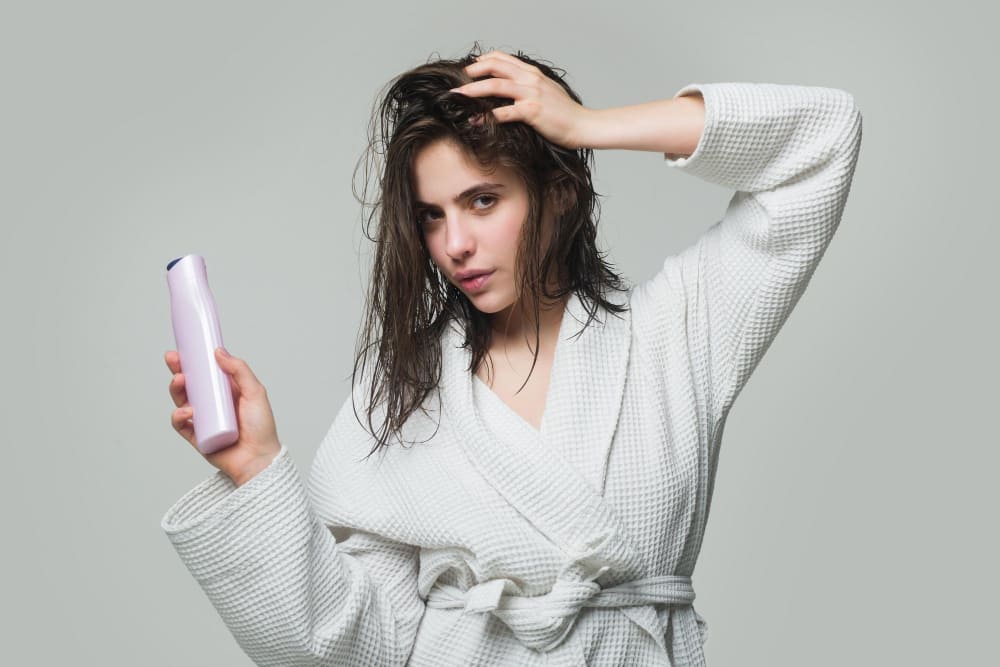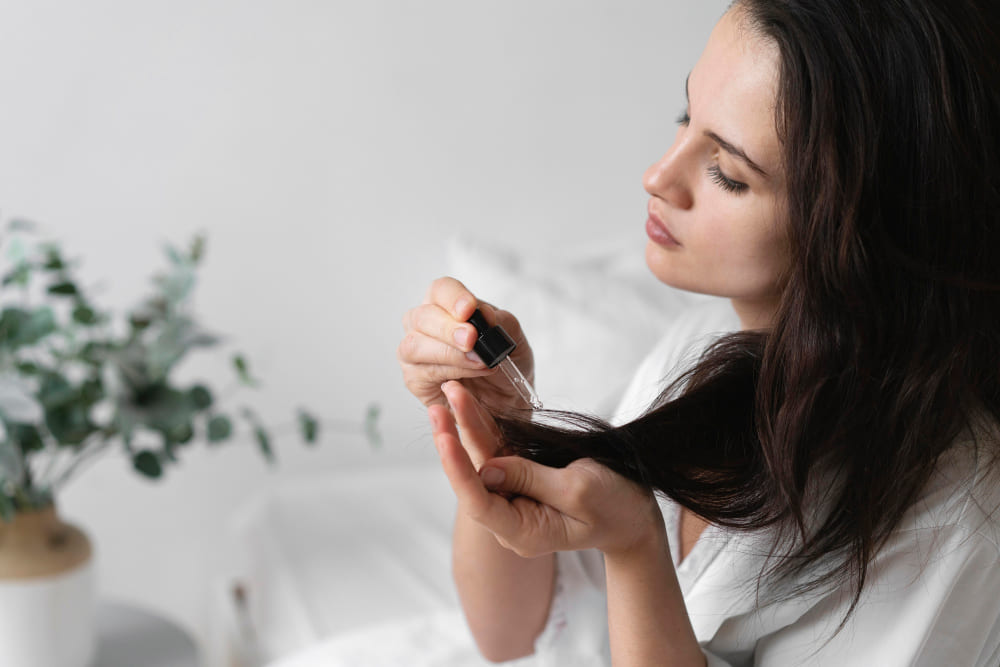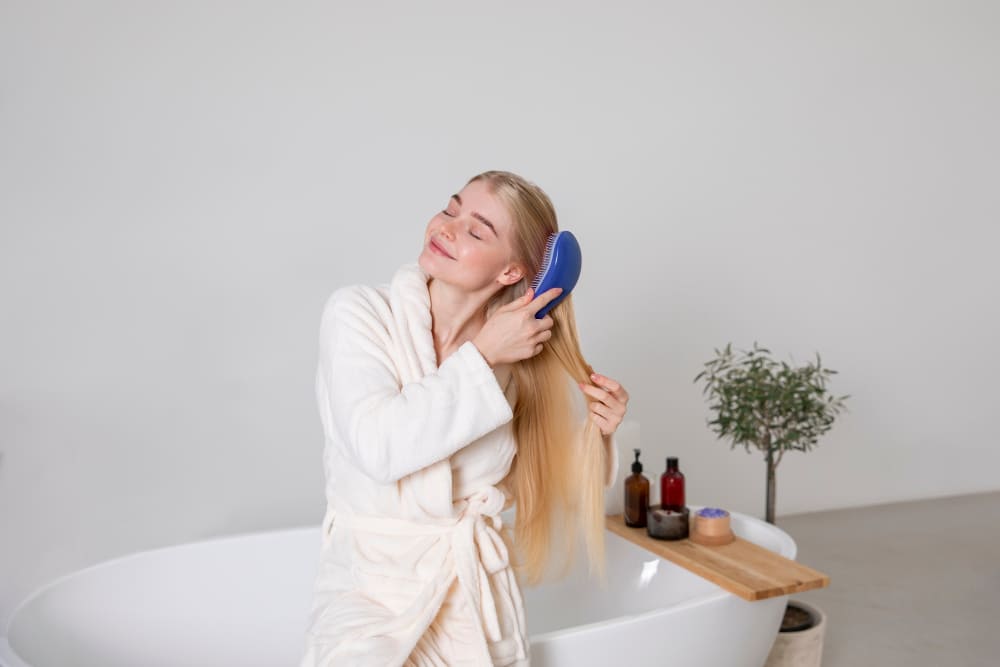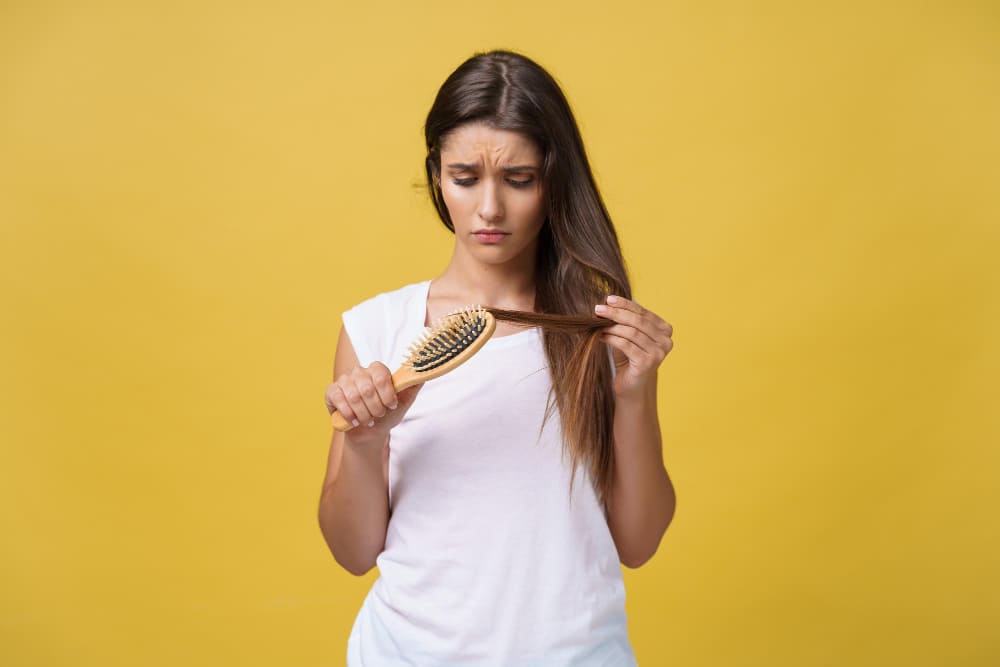Hair can lose its shine and elasticity with time, becoming brittle, dry, and more prone to breakage. Deep conditioning treatments are required to restore the moisture that escaped, replenish nutrients, and strengthen the strands. These repairs mediate an internal system within the hair shaft that can hydrate and strengthen the hair from within. They will also provide a defense against damage caused by environmental aggressors.
Deep conditioning is designed to maintain your hair’s natural balance, regardless of the hair type. It provides softness and combats frizz while benefiting the shine and smoothness of straight hair. Both natural and chemically treated hair will gain strength and elasticity through regular conditioning, increasing resistance to damage. Conditioning is an essential ingredient for keeping hair healthy and lively, regardless of texture.
What Is Deep Conditioning?
Deep conditioning involves applying a specially formulated hair conditioning treatment to your hair and leaving it on longer than a standard conditioner, usually 10 to 30 minutes. These treatments contain richer ingredients that hydrate, soften, and strengthen the hair from within. They are ideal for all hair types but especially beneficial for textured, colored, or dry hair. Explore more about how to moisturize your hair effectively to get the best results from your deep conditioning routine.
Deep conditioning aims to make hair more elastic and less prone to breakage over time, and the opposite may occur if a deep conditioning treatment is not given to hair. On the other hand, deep-conditioning smooths the cuticle so that frizz diminishes and shine intensifies. Firms up chemically treated hair regularly while preventing future damage to it. It relaxes detangling and eases styling, putting a wonderful finish on your hair that screams salon from home.

Step-by-Step: The Best Way to Deep Condition Your Hair
Whether your goal is to restore moisture, improve texture, or repair damage, a proper routine makes all the difference. These tips work for all hair types and help ensure your deep conditioning treatment delivers lasting results.
Start with Clean Hair
Always begin deep conditioning with freshly washed hair. A gentle shampoo removes dirt, oil, and product buildup from the strands, allowing better absorption of the hair deep conditioning treatment. If the hair is not clean, the conditioner may just sit on top and not penetrate the strands. Clarifying shampoos may be used occasionally with heavy buildup, though they should not be overused due to potential drying of hair.
Apply the Deep Conditioner Evenly
Choose a deep conditioner that fits your hair type. Section hair and generously apply product from mid-length to ends only. Avoid scalp application unless the product mentions the possibility of using it on the scalp. Use a wide-tooth comb or your fingers to spread the conditioner evenly through every strand.
The Application of Heat for Better Permeation
For maximum benefits, hair is covered either under a shower cap or with a warm towel. Sitting under a hooded dryer or using a hair steamer would be a good option as well. The heat opens the cuticle layer, enabling the deep conditioning hair treatment to penetrate more inside. In the absence of heat tools, the hair might be wrapped in a towel warmed in the dryer.
Let It Sit
Leave the product for at least 15 to 30 minutes. Follow the instructions of your deep conditioner; do not exceed the stages of the set time, take away any benefits from deep conditioning, which can cause limp strands or greasy build-up. Some formulas can deliver intense deep conditioning in just 10 minutes, while other deep conditioners are formulated with longer treatment times. However, be patient; the crucial factor in deep hydration is some patience.
Rinse Thoroughly
Rinse the hair with cool or lukewarm water to seal the cuticle and trap moisture. Avoid hot water as it can wash away your deep conditioner. Spend adequate time rinsing, especially if your hair is thick or extremely curly; any remnants could cause weight on the hair and give it a dull appearance.
Dry and Style
Gently towel-dry your hair and continue styling normally. You will feel a soothing texture, enhanced luster, and ease of styling. Do not bombard hair with heat right after deep conditioning; air dry if you can, or apply heat protectant before heat styling. A good maintenance of this procedure every week will surely have fruitful results in the long run for the general well-being of hair.

How Often Should You Deep Condition?
How often deep conditioning for the hair should take place depends on its actual condition and needs. Usually, for a normal hair type, the recommendation would be once a week. Twice conditioning might be required in the case of severely damaged hair or very dry hair. For fairly healthy hair, a good deep condition every two weeks would be just about right. You would need to check on how your hair is feeling. Very soft and limp hair can be a sign of over-conditioning, whereas dry, brittle, and frizzy hair could imply the need for more moisture.
Consistency is key when it comes to maintaining moisture balance. Make deep conditioning a regular part of your hair care routine, especially if you frequently use heat tools or color treatments. Over time, you’ll notice improved texture, fewer split ends, and better elasticity. Remember, quality products and proper technique make all the difference. Learn more about maintaining healthy hair to keep your locks looking their best year-round.
Choosing the Right Deep Conditioner
Not all deep conditioners work the same. A few things to keep in mind: The hair type, current condition, and styling habits will give you an idea of what to choose. If the hair is dry, damaged, or color-treated, an ideal formula must be selected to make the most of the deep conditioning treatment.
For Dry Hair
They need to have shea butter, coconut oil, and glycerin because these ingredients will keep the hair nourished and hold moisture inside. Deep conditioning treatments containing natural oils will help seal the cuticle and bring softness back to crazy dry strands. Going for deep conditioners with drying alcohols can ironically start drying your hair over time. Using them will make hair smoother and more hydrated in every single wash.
For Damaged Hair
Use protein treatments with keratin or hydrolyzed wheat protein to restore and strengthen damaged hair. These ingredients help rebuild hair structure internally and reduce breakage. If hair feels too soft or stretchy, then balance protein with moisture to avoid overloading with protein. These are the deep conditioning treatments almost every chemically treated or heat-damaged hair needs.
For Color-Treated Hair
Go for those sulfate-free formulas that have UV protection to maintain color vibrancy. Deep conditioning recipes with antioxidant power and nourishing oils will stop fading and give a shiny surface. Argan oil and sunflower extract might especially be good for dyed hair. Do check whether it is labeled safe for color-treated hair, which may prevent incidences of unwanted brassiness or drying.
If you’re unsure where to start, HairSocial offers expert reviews and recommendations for high-quality deep conditioning hair treatments that match your needs.

Final Thoughts
Deep conditioning treatments provide additional moisture and nourishment that your regular conditioner cannot. In the long run, they heal damage, lessen breakage, and guard your strands from daily wear and tear and environmental stressors. Incorporating these treatments into your hair care routine creates a base for stronger and resilient hair. A little effort does wonders in the long run. Whether you need to combat dryness, enhance shine, or strengthen hair, a hair conditioning treatment done regularly will provide set results.
After a few deep conditioning treatments, your hair will feel softer, easier to manage, and less prone to tangling. Utilizing a deep conditioner consistently makes hair easier to style while sealing in moisture and minimizing split ends through better hydration. Deep conditioners also keep hair color from fading and protect hair from heat damage. Remember: stay consistent and apply products that best meet your needs.
Check out HairSocial for more tips and tricks, or visit product guides, expert blogs, and anything you desire for refreshing your hair care regimen. HairSocial provides curated insight from industry professionals to aid in choosing the best deep conditioning treatment for your hair.


Leave a Reply